
Vivid memories and proud moments

December 10, 1977, the Korea Telecommunications Research Institute (KTRI) was founded in affiliation with
the Institute of Science and Technology Information as a research organization specializing in telecommunications.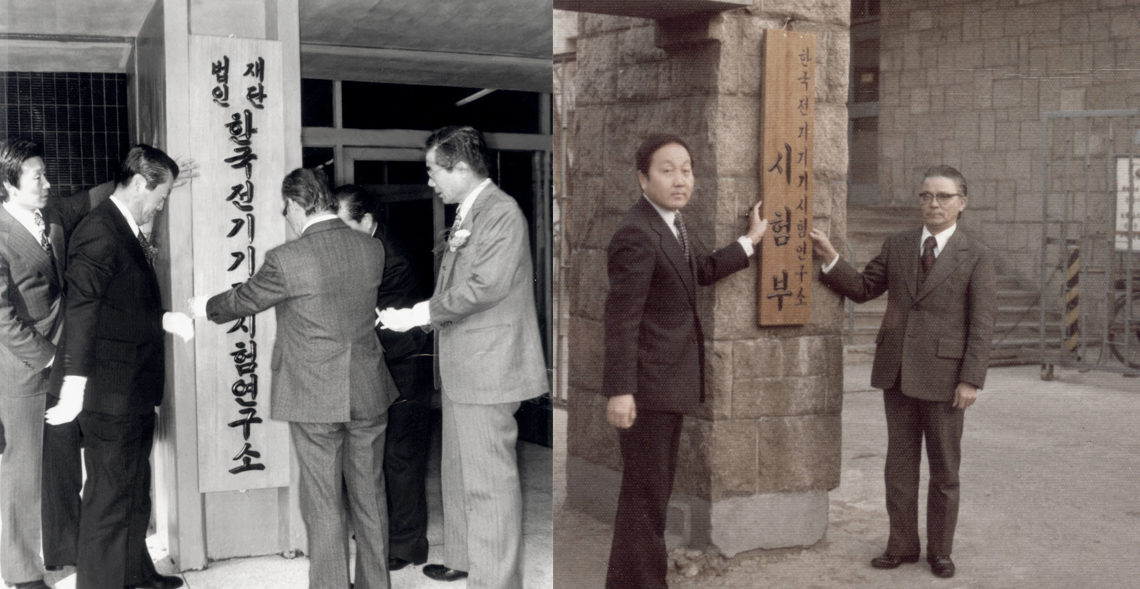
(Left) On December 30, 1976, the Korean government inaugurated the Korea Electric Research and Testing Institute (KERTI).
(Right) Signboard-hanging ceremony for KERTI’s testing division (Shindang-dong in Seoul).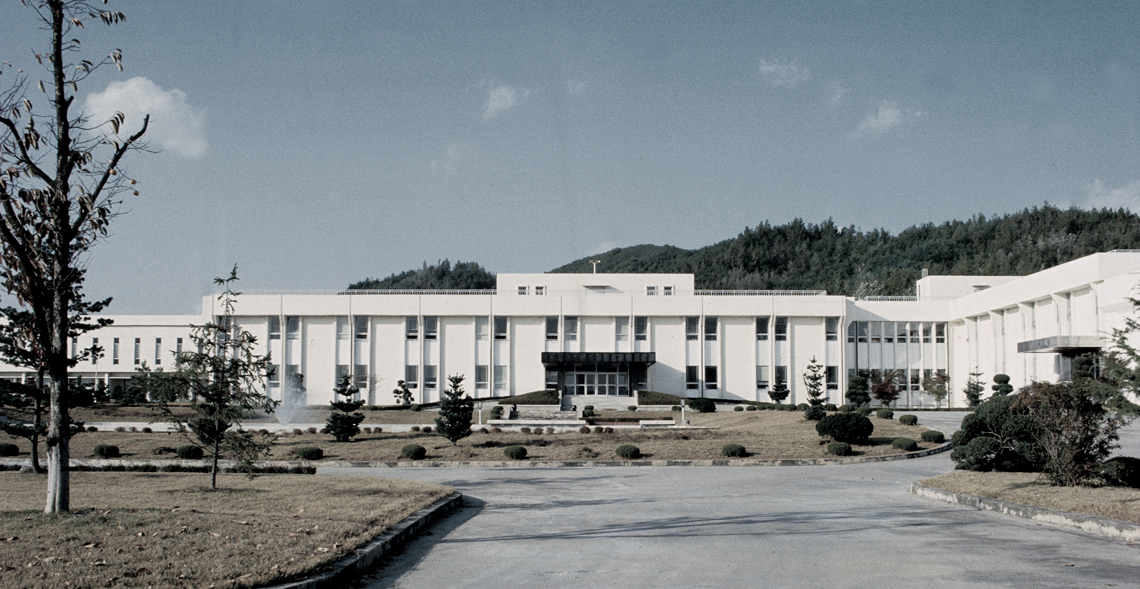
On December 30, 1976, the Korea Institute of Electronic Technology (KIET) was founded in Gumi, Gyeongsangbuk-do,
to lead the development of electric and electronic technology, particularly semiconductors.
KIET’s main duties included specialized research in electronics, including semiconductors and computers.
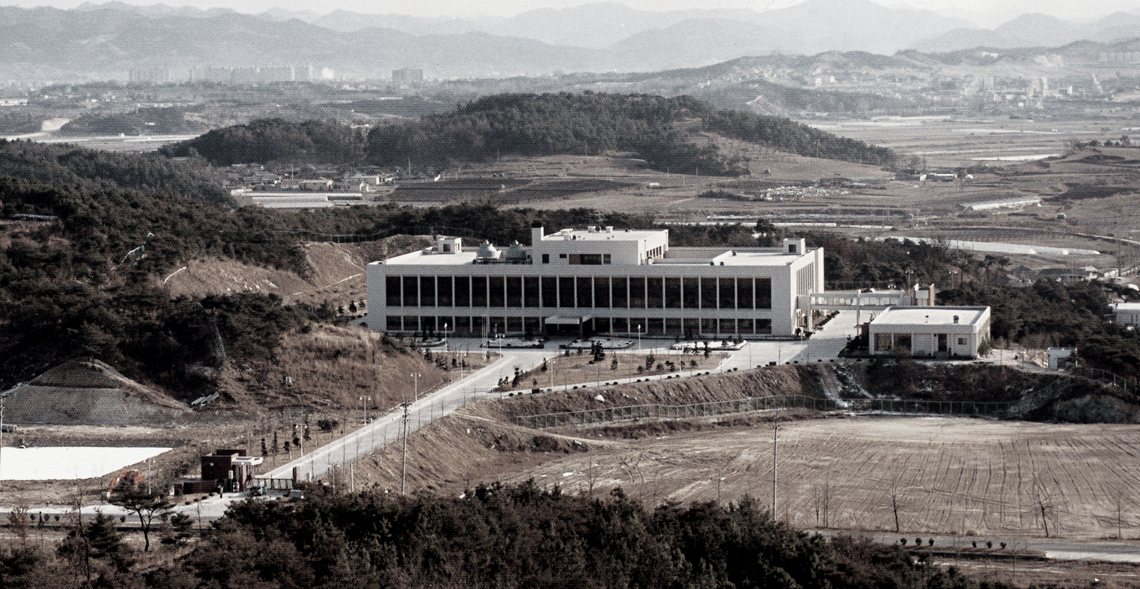
On January 20, 1981, KTRI and KERTI were merged into the Korea Electronics and Telecommunications Research Institute (KETRI).
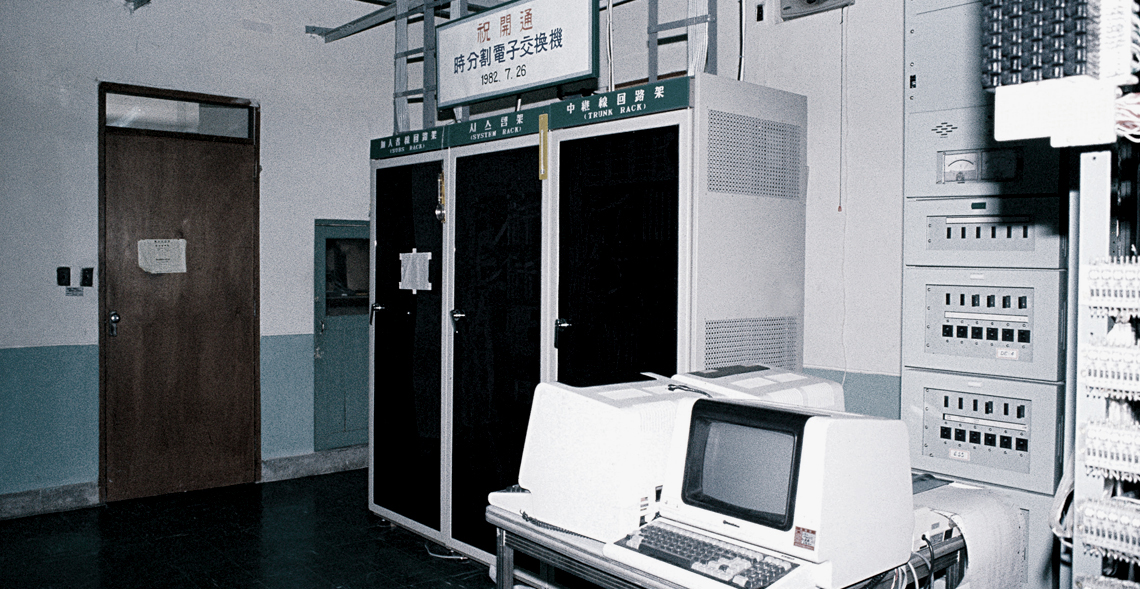
On July 26, 1982, the electronic telephone exchanger (TDX-1X) initiated field testing for subscribers to 362 lines.
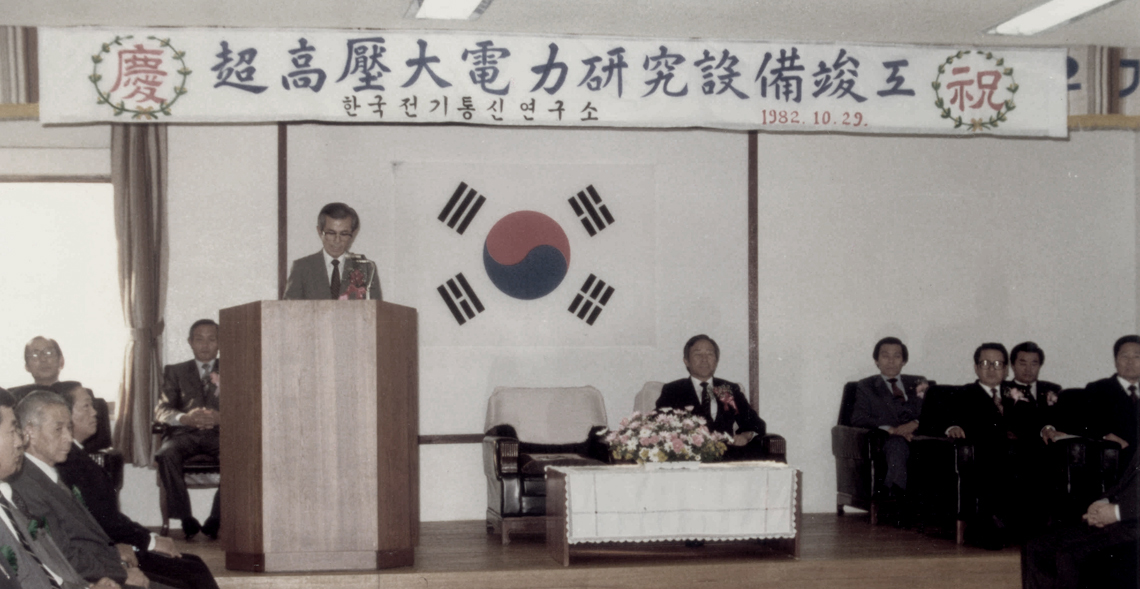
On October 29, 1982, a ceremony was held to celebrate the completion of ultrahigh-voltage and high-power research facilities.
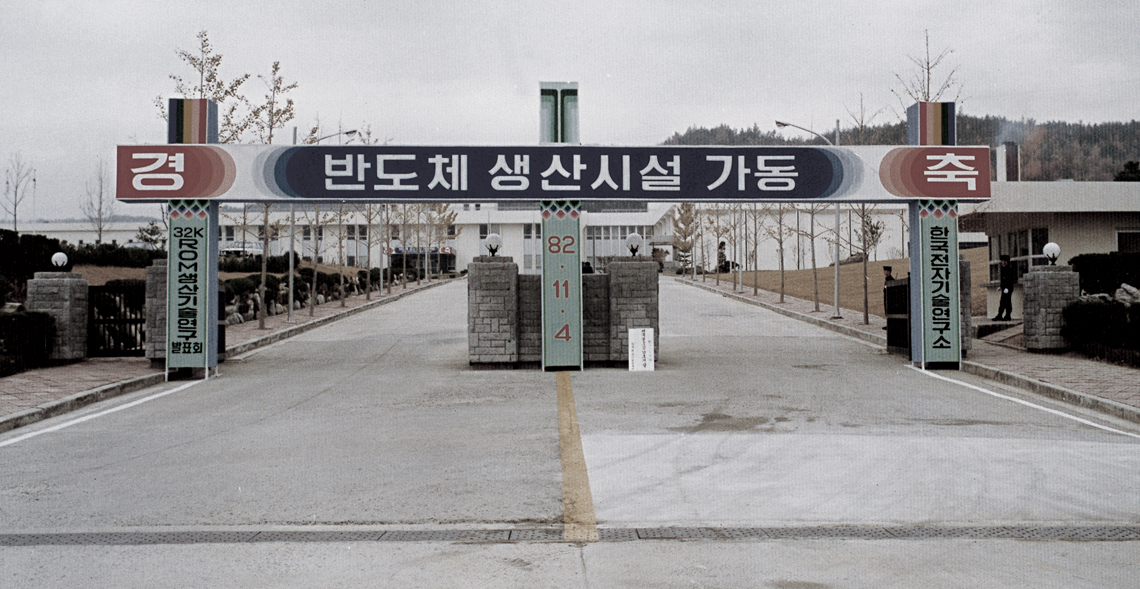
Having successfully developed a 32K ROM, KIET began full operation of semiconductor manufacturing facilities in November 1982.
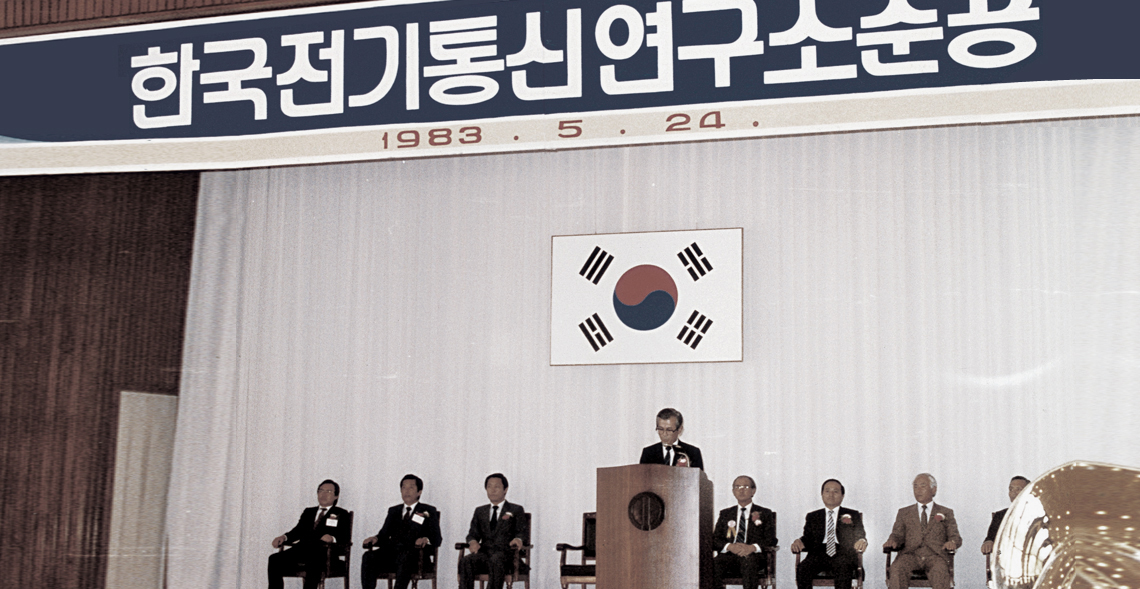
On May 24, 1983, KETRI’s building completion ceremony was held.
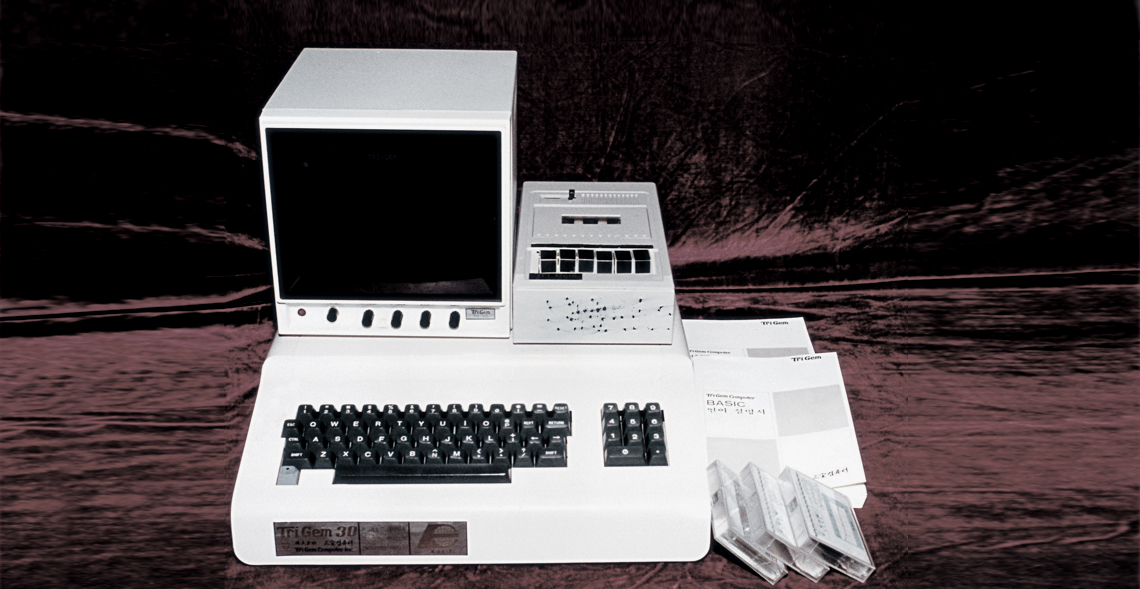
In March 1983, KIET developed Korea’s first 8-bit personal computers for educational purposes and distributed them to educational institutions nationwide.
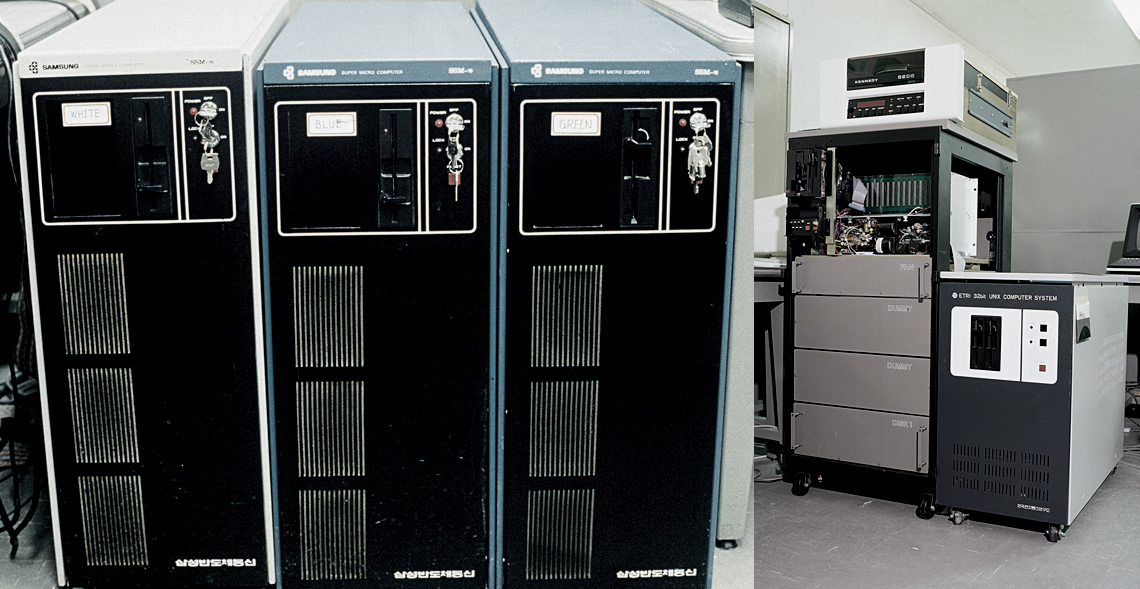
(Left) Having successfully developed 8-bit computers, KIET developed UNIX-based 16-bit computers in March 1984.
(Right) KIET later developed more advanced 32-bit computers, which were commercialized with the model name, “SSM-32.”





